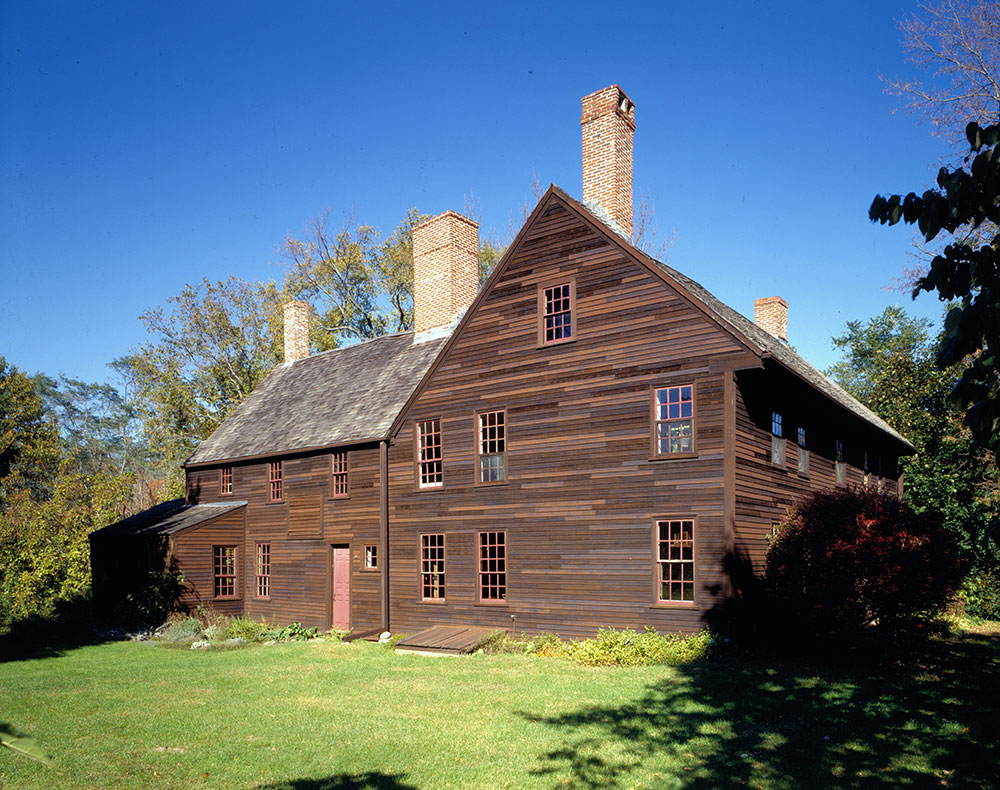Expert Home Advice | April 2016
House care answers from the largest heritage organization in the country. What is the best way to clean unpainted interior woodwork? -Susan L., Burlington, VT Unpainted interior woodwork can be cleaned by using a slightly damp, lint-free cloth (cloth diapers work well) with a mild solution of soap and water. (Murphy’s Oil soap is recommended.) […]
House care answers from the largest heritage organization in the country.

Photo Credit : Courtesy of Historic New England
What is the best way to clean unpainted interior woodwork? -Susan L., Burlington, VT
Unpainted interior woodwork can be cleaned by using a slightly damp, lint-free cloth (cloth diapers work well) with a mild solution of soap and water. (Murphy’s Oil soap is recommended.) The woodwork should then be rinsed thoroughly—again, using a slightly damp cloth. If oily grime remains on the surface, wipe woodwork with odorless mineral spirits (be sure to ventilate the area well) and rinse until dirt is no longer evident on the cloth. For heavily soiled woodwork, steel wool (the least abrasive possible) can be used with the odorless mineral spirits. Once cleaned, woodwork can then be treated with a light coat of wax.
 Joe Cornish,
Supervising Preservation
Services Manager
Joe Cornish,
Supervising Preservation
Services Manager
***
I am looking for information regarding houses that were built facing away from the street. The majority of the homes I have seen like this are from the early 1800s. Why do they run perpendicular to the street they are on? Can you direct me to an information source regarding this practice? -Joseph A., Worcester, MA
In cities and seaports in New England, and in other cities, such as New York and Charleston, urban density dictated that house lots were narrow and thus houses were set perpendicular to the street. Abbott Lowell Cummings, in Framed Houses of Massachusetts Bay, notes that in the 17th-century, in-town buildings followed this pattern, but their floor plans still followed the standard house design of the time, with two rooms on either side of an entry and chimney, and the better or more formal room facing onto the street end.
The other absolute convention of early house construction was to have the primary elevation face south. So sometimes, to achieve a south-facing façade, early houses are angled on their lots. Generally speaking, in terms of the way streets develop, south-facing lots are more desirable and tend to have been built up first. So orientation to the sun, density of properties, and traditional house plans all play a role in how a house is sited to the street.
 Sally Zimmerman,
Senior Manager of Preservation Services.
Sally Zimmerman,
Senior Manager of Preservation Services.
***
What steps can be taken to make a case for preserving a very old home that will eventually be demolished or is being neglected to the point of demolition? Is there a protocol for establishing the history and value of an old dwelling -Amy S., Brookline, MA
That’s a pretty big question and depends on many factors, including the age, rarity, historical associations, architectural value, location, and condition of the property and its capacity, under local planning and zoning laws, to continue to be used or adapted for reuse.
Generally speaking, only inclusion in a local historic district or being subject to a local demolition delay bylaw can slow or prevent demolition. Most municipalities do not have “demolition by neglect” laws.
The other factor that strongly affects house preservation is the local planning and zoning framework. If zoning allows for much more intensive development of the property, it is difficult to keep a historic house on that property unless it can be modified or incorporated into a development proposal. Similarly, structural condition, if very poor, can render a historic house nearly impossible to preserve. But a structural engineer with historic house experience should determine IF the condition is so poor that necessary repairs would be either cost prohibitive or result in the replacement of the historic building with a “new” building. Simply failing to “meet code” is an insufficient justification to render a historic house incapable of preservation.
 Sally Zimmerman,
Senior Manager of Preservation Services.
Sally Zimmerman,
Senior Manager of Preservation Services.
***
Got a question about an old house you need answered? Submit your questions to Historic New England at:Plus@YankeePub.com.
Historic New England is the oldest, largest, and most comprehensive regional heritage organization in the nation. Historic New England shares the region’s history through vast collections, publications, programs, museum properties, archives, and stories that document more than 400 years of life in New England. For more information visit: HistoricNewEngland.org.



